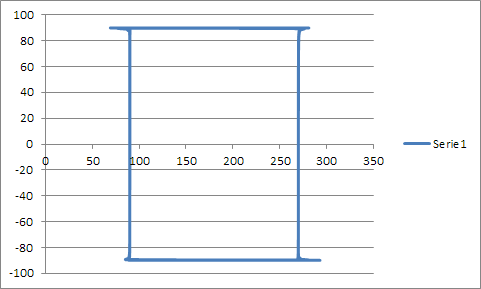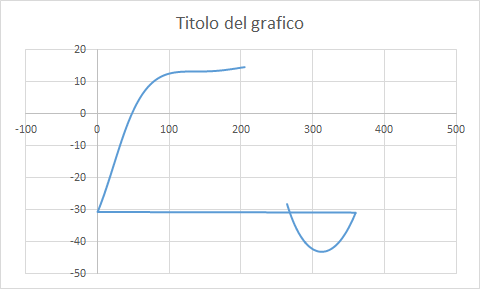I tried to replicate these analemmas, taken from a discussion of the equation of time in the following post: http://pbarbier.com/eqtime/eqtime.html:
I used "Quantity n.4" for Nasa Horizons (apparent Alt/Az from planet surface):
http://win98.altervista.org/space/exploration/NHUGUI.html
Link for Mars data: link
For Earth I get quite good results (at least, it's an 8-shaped curve...):
But look at what I get for other planets!
Possibly I should use proper STEP_SIZE input parameter for each planet, to get one result/line per each local day ("Sol" or wtahever), but trying 1477 and 1478 (*) for Mars gives two totally different plots, both different from "reference" plot above.
Possibly I should also specify proper year duration in the Horizon query (687 Earth days for Mars), but this shouldn't affect the shape of the plot, but just if the plot is complete or not.
(*) A Martian day lasts 88642.663 Earth seconds, i.e. 1.477,37771666 Earth minutes, but Horizons does not accept seconds as STEP_SIZE input, neither it accepts decimal values for minutes.
Further data:
Sidereal Day duration (not suitable for anelemma):
- Mercury: 1407.6 hours = 84456 min = 5067360 sec
- Venus: 5832.6 hours = 349956 min = 20997360 sec
- Mars: 24.6229 hours = 1477.374 min = 88642.44 sec
- Jupiter: 9.9250 hos = 595.5 min = 35730 sec
- Saturn: 10.656 hours = 639,36 min = 38361.6 min
- Uranus: 17.24 hours = 1034.4 min = 62064 min
- Neptun: 16.11 hours = 966,6 min = 57996 sec
Solar Day duration (sol):
(to be written)
- Mercury: 175.94 EarthDays = 4222.6 hours = 253356 min = 15201360 sec
- Venus: 116.75 EarthDays = 2802.0 hours = 168120 min = 10087200 sec
- Mars: 1.0274875 EarthDays = 24.6597 hours = 1479.528 min = 88774.92 sec
- Jupiter: 0.414 EarthDays = 9.9259 hours = 595.554 min = 35733.24 sec
- Saturn: 0.444 EarthDays = 10.656 hours = 639,36 min = 38361.6 min (same as sidereal ?!?)
- Uranus: 0.718 EarthDays = 17.24 hours = 1034.4 min = 62064 min (same as sidereal ?!?)
- Neptune: 0.671 EarthDays = 16.11 hours = 966,6 min = 57996 sec (same as sidereal ?!?)
Year duration in Earth days:
- Mercury: 88 days = 0.5 Sols
- Venus: 225 days = 1.927 Sols
- Mars: 687 days = 668.62 Sols
- Jupiter: 12 years = 4383 days = 10587 Sols
- Saturn: 29 years = 10592.25 days = 23857 Sols
- Uranus: 84 years = 30681 days = 42731 Sols
- Neptune: 165 years = 60266.25 days = 89816 Sols






